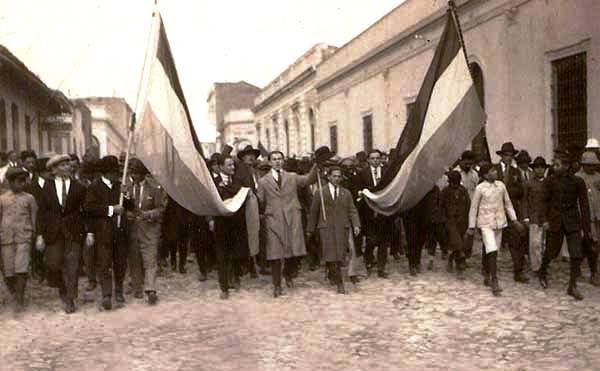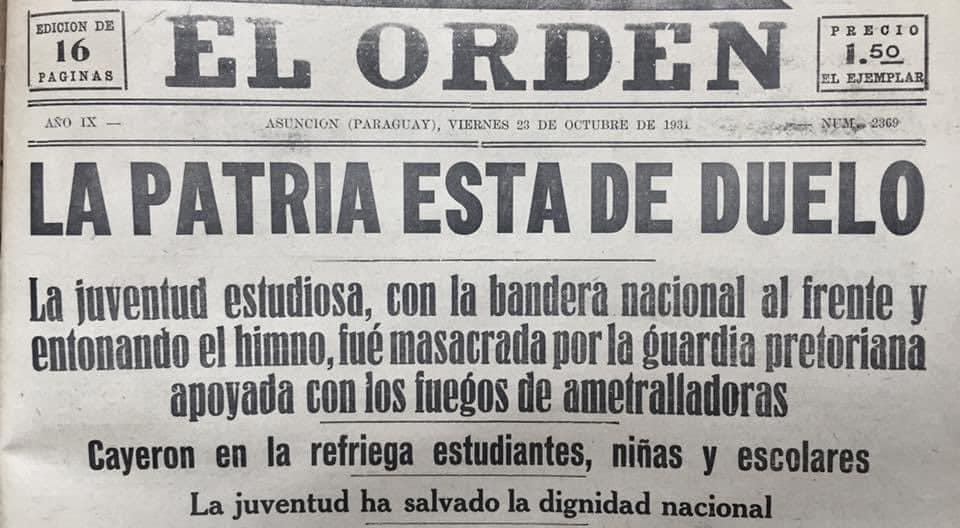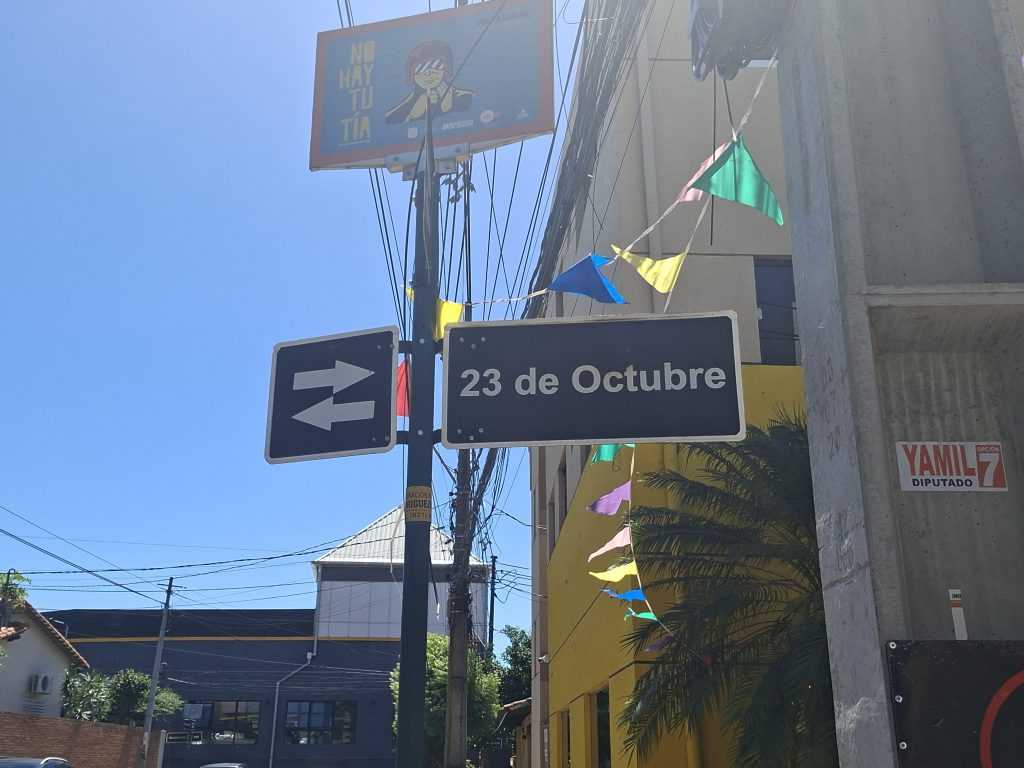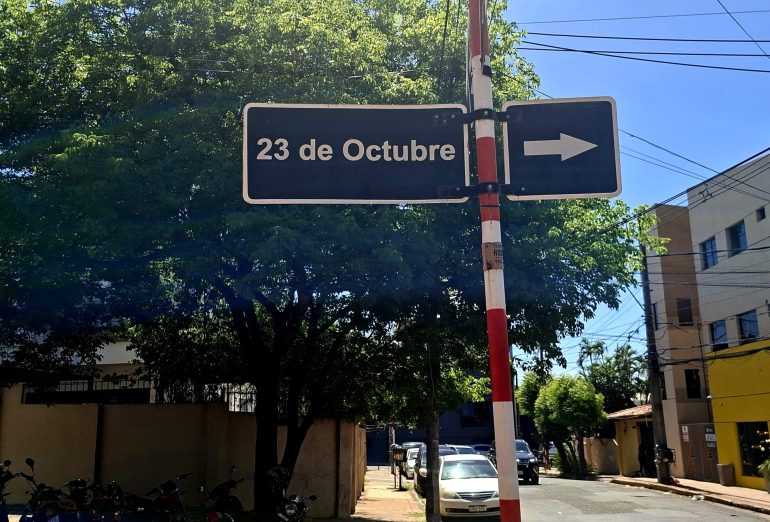In Asunción, like in all cities and villages in the world, street names have a meaning. In the capital city of Paraguay, there is a street name 23 October. But why does this date deserves its own street? Because on that day, in 1931, a student-led protest was organised in Asunción, demanding more from the Paraguayan government in defending the Chaco area, during Bolivian presence. This all lead to a bloody conflict in Asunción’s streets on 23 Occotber that year. Less than a year later, the Chaco War officially started.
The days before 23 October 1931
Back in the 1930s, the National College was located in the historic Eligio Ayala building between Yegros and Iturbe streets. The entire block had been the residence of Madame Elisa Lynch. The students of the school met in an assembly on 20 October 1931. They decided to demand from President José P. Guggiari the need to defend the Chaco. While the students led the movement, it was a demand from more sectors of society.
The students had multiple revindications, such has:
- Protesting the event of Fortín Samarklay (Masamarklay);
- Demanding a more energetic policy on the border issue with Bolivia;
- Requesting the return of high-ranking military commanders from their study mission abroad.
Following the formalities, the student requested permission for a protest on the afternoon of the 22 October, and the permission was granted by the Police Headquarters. On the morning of 22 October, Dr. Efraín Cardozo arrived from the presidential office and informed them that the student must submit their speech in writing. This way, the government was trying to gain time to avoid the march. The students declared that they could no longer cancel the march, which was scheduled to begin at 16:00, and for which they had received police permission the day before.
The scheduled route was as follows: 14 of July Street (Now Mariscal Estigarribia); Palma; Convention Street (Now O’Leary); until reaching the López Presidential Palace. Mr. Agustín Ávila, the President of the Student Centre of the National College, was to speak with President Guggiari.
On 22 October
In the afternoon, Plaza Uruguaya in Asunción was filled with students giving patriotic speeches, amid the explosion of firecrackers brought from the closeby city of Luque. Around 400 students participated. The students, carrying flags, had begun to march toward López Palace, amid applause from the residents. Upon reaching the gardens in front of the Palace, they sang the National Anthem and were informed that President Guggiari was not in his office. The discontent was widespread. The young people considered the presidential snub an insult.
March to the Military College
The students of the National College then decided to march to the Military College, now the National Congress. There, they planted a flag and the young speakers expressed their protest against the Bolivian occupation of the Chaco. To heighten the tension, Major Arturo Bray appeared, demanding that they retreat “to some square.” They were chased away from the place where the soldiers who were supposed to defend the Chaco were being trained.
They left the place and went to the residence of Major Rafael Franco, who came to the door and told them that he “shared their concerns, but that he was in retirement.” The student mass then went to President Guggiari’s home, where they were repressed by the police.
They left to meet somewhere, unaware of what would happen on 23 October.


23 October, a bloody Friday
Reunited in assembly, they decided to “make themselves heard by the President of the Republic.” For the new march, they invited their classmates from the Normal School and university students from the Faculty of Law and Medicine.
The demonstration arrived in front of the Palace midmorning. With chants, they demanded the presence of the Head of State. Machine guns were already positioned at the top of the building. A company of riflemen entered through the Palace door overlooking the bay. The tension was broken by shouts as they were machine-gunned. In the students’ panic, there was a widespread scramble to the ground. Many were shot in the back.
The result was 10 students dead, 24 students wounded, and 25 students who were able to escape. One elderly person deied, and 5 other people wounded. In total, 65 victims of what people call the “Massacre of 23 October.”
Teacher one day, hero the next
Josefina Adelaida Rodi, a student at the Teachers’ College was in the front rows as the standard-bearer. When the shots were fired, Adelaida did not flee due to the volleys. She advanced with her flag held high, its flagpole broken, and climbed the steps of the Palace. Rodi was brutally beaten with a sabre by Security Battalion Officer José F. López.
The student and two classmates managed to come face to face with President Guggiari, who shouted at her: “This flag is unworthy of being in your hands.” Adelaida Rodi responded: “You are the unworthy one.” When she was called to testify in the impeachment trial of José P. Guggiari, she repeated it again: “You are the unworthy one.”

Naming the street 23 October
Paraguay’s government, by Ordinance 649, declared a 23 October street. Named in 1942, the street begins around Dr. Toribio Pacheco in Recoleta. Cut in two, the street restart on the other side of the Recoleta Cemetery. 23 October street continues to Mariscal López Avenue, and runs north to España Avenue. This street is parallel to Choferes del Chaco Avenue and Santísimo Sacramento Avenue.


